Spitfire P9507 Crashed 17 July 1940
Some 10 years ago, almost 50 years after my first modelling experiences as a teenager, I chose to re-engage in this past-time to get a better understanding of how various aircraft looked that became casualties around my home town near Eastbourne in Sussex during the summer of 1940.
While this drew me more towards Luftwaffe subjects since photo references were easier to find, I soon decided that I needed to add some RAF fighters to the mix. One of the first that I built was an OOB Tamiya Spitfire Mk 1, depicting a 92 Squadron aircraft flown by Don Kingaby, who gained a reputation as a 109 killer. The result of that effort is shown in the last of the pics attached to this post, a model that has sat on the shelf in my study since that time and with which I became increasingly disenchanted due to my skill and detail level, as well as the way the decals seemed to lose colour, particularly the red and yellow areas.
So, at the beginning of 2017, I embarked on a reworking of that model, aimed at portraying an aircraft that was an early local casualty during the BoB. This subject is Mk 1 Spitfire P9507, which arguably became the 14th victim to succumb to the aggressive tactics of Leutnant Helmut Wick of 3/JG 2. This Spitfire was flown by P/O Donald Murray Taylor on one of several patrols conducted by his 64 Squadron on the 17th of July 1940, many of which were part of the RAF’s efforts to protect coastal traffic through the Channel. Gaining local air superiority over the Channel and interrupting Britain’s coastal shipping was the initial primary target of Goering’s Luftwaffe after the fall of France in June 1940, a prelude to any potential of Britain’s invasion that may have followed.
Near Beachy Head, Wick and his wingmen, Franz Fiby, pounced on Murray’s a/c, which was acting as weaver for the rest of the squadron on patrol. Murray was probably unaware of the attack until Wick’s gunfire smashed into the aircraft, wounding him in the head, body and both right limbs, as well as seriously damaging the a/c. Murray managed to bring his faltering a/c into a field on Welbury Farm on the outskirts of Hailsham, a small market town a few miles north of Beachy Head. Donald Murray was lifted from the wrecked plane and taken to Princess Alice Hospital in nearby Eastbourne. His injuries were such that he was able to return to operations with 64 Squadron on the 3rd of September 1940 and he remained in the RAF until after the end of hostilities in 1945.
The model was an interesting proposition and I was determined to make a better job of it than my initial effort more than 10 years ago. First job was removing all the delicate bits that my untidy work practice would undoubtedly destroy, many of which were eventually devoured by the insatiable beast covering the floor. Among these lost items were the radio antenna, all the clear parts (don’t ask me why), the B&S gunsight lens and the pitot arrangement. All good clean fun to replace. Next was the removal of all the decal markings from under their clear varnish, a job that left me confused and frustrated since, despite careful sanding with fine grit flour paper, various delicate panel lines were lost and had to be amateurishly re-scribed.
So then, what would P9507 have looked like? As one of 200 early Eastleigh Spitfires, I decided the a/c would probably be covered with a “B” pattern camouflage on the top surfaces, with the under-surface painted in one of the early Sky shades. It was a bit of a toss up as to whether there would have been roundels under the wings, but the timing suggested probably not. I then came across a Pathe News clip of Spitfires and Hurricanes operating out of Kenley sometime while 64 Squadron was based there. Having been involved over France with the BEF until Dunkirk, the squadron was rested further north later in August, so this was an interesting clip, identifying various details that I probably would have ignored. Among these were the gunsight bead in front of the header tank filling cap, the unusual rear-view mirror arrangement and the markings, both national and squadron. It also appeared that the a/c registration number on all the a/c evident had all been over-painted. Amazing what you can find if you look hard enough!
A few additional details I thought worth a go, so I also added u/c indicator rods on the wing top surfaces, seat belts, seat armour, canopy release handle and the antenna fitting on top of the vertical stabiliser (courtesy of pics of P9374).
Well! All that was probably at the beginning of 2017 and my sporadic time management issues have meant that I’ve only recently got the model to the state shown in the attached pictures. Apologies to all those who like their models factory fresh. It seemed to me that 64 Squadron were having a busy time over the June/July period, so the a/c would have looked a bit knocked about. On the 17th of July, the squadron OB shows 6 different patrols were launched (not all full squadron strength) with Murray’s a/c force landing at 1400 hours during the 3rd sortie of the day.
The last pic added is of the restored P9374 with Ken Wilkinson standing by the tail. This pic shows the u/c indicator rod on the left wing, as well as the tail fin antenna connection quite well,
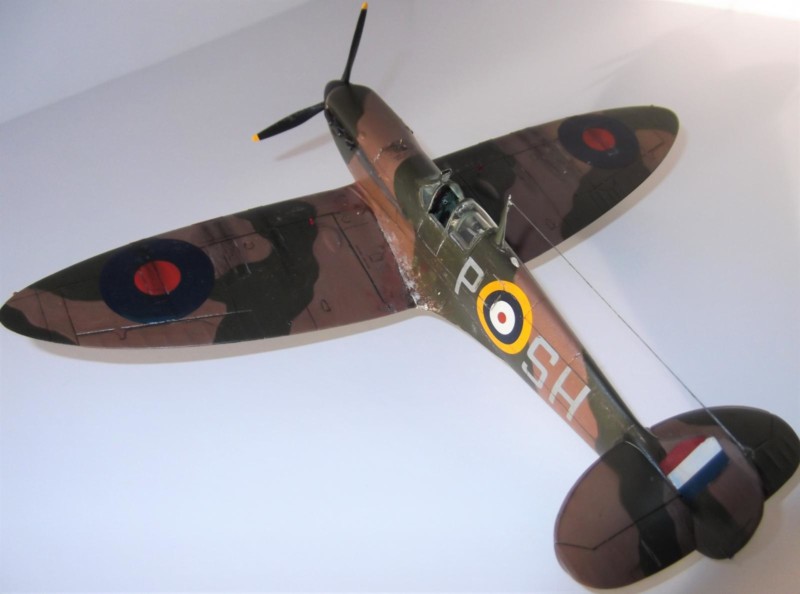
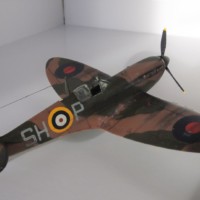
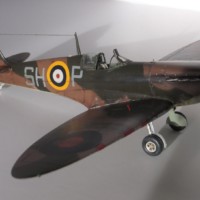
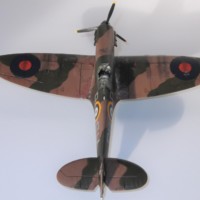



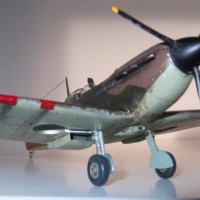
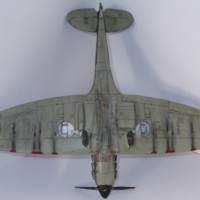


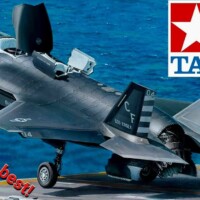
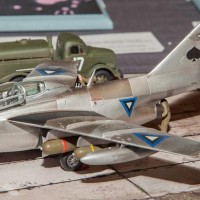

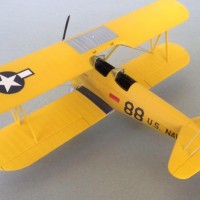
Very nice work! Nice piece of history also.
Beautiful Spitfire, Paul. Your wonderful accounting of the history of the plane & your involvement is very interesting, as well.
Thanks for sharing.
Paul, what is a "u/c indicator rod?" I see them on your model (in red) but even though I THOUGHT I knew a lot about a/c, this is one (probably of many) of the details I've never heard of.
Thanks!
Indicates whether the gear is up or down...that's all.
Jeffry - Craig's right. Many aircraft had this indicator linked to the u/c mechanism when the rod protruded through the upper wing surface when the u/c was down. Guess it was some sort of fail-safe against electrical problems shorting out the indicator lights on the control panel. I guess it also was an added prompt for those pilots who would have normally flown a/c wiith gear fixed down that they were in danger of belly landing if the indicators didn't show above the wing surfaces. Other a/c in WW2 (eg early Fw 190s) used a similar mechanism I think. My brother's Avia Milano Nibbio (built in the 50s) also had these. Paul
Jeffry - I added another pic to the post which shows the restored Mk 1 P9374 with BoB pilot Ken Wilkinson standing near the tail. You can see the left u/c indicator rod showing that the gear is down and locked, You can also see the fin antenna connector arrangement which differs a bit from the simple post that appears in most small scale kits of Mk 1s.
Paul
Thanks for the added information, Paul - and Craig too! I love learning about these little tid-bits of information.
Ok, so a number of aircraft used these u/c rods as perhaps a back-up for electrical failure, but why the British planes? We all know that British electrical systems were always working properly, right?!
Or not.
Sorry, I had to try and be funny. Seriously, THANKS!
Nice build, Paul...I like it.
I always enjoy your postings, Paul, lots of interesting history and research, and you’ve gone to a lot of bother in bringing this model back for a second chance.
I agree with George wholeheartedly on this one... I echo his sentiments... Well done Sir !
You could build a Helmut Wick 109 to go along with this one. I think it's fairly well documented and would be a good one to park next to the Spit.
Hi Louis - It's on the "to do" list, mine being pretty much no account compared to your "Tank" workshop, alluding to your Fw 190 production line and your M1A1 background.
Paul
Great looking Spit!
Very nice build Paul, kudos honoring this historical event!